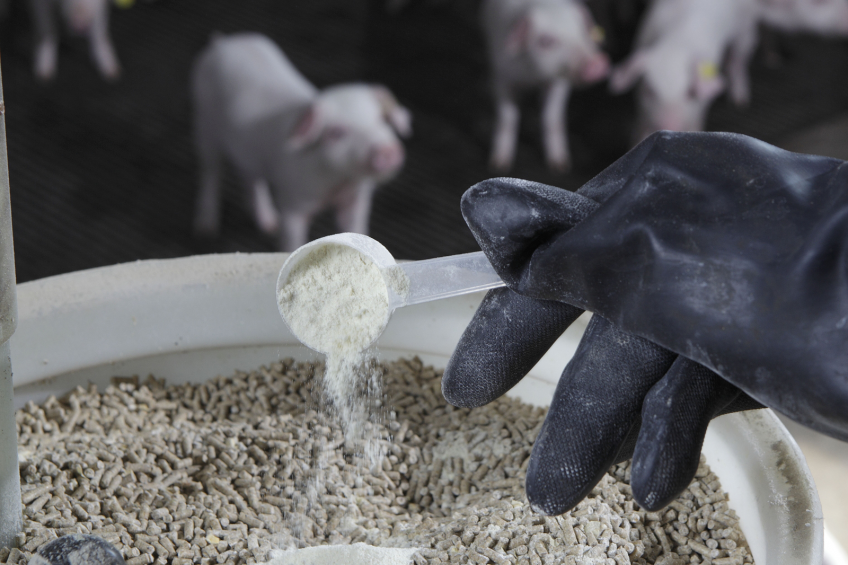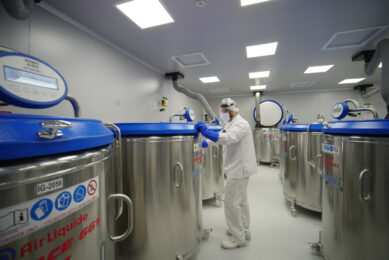Feed additives, an alternative gut health solution

Antibiotic resistance is one of the most challenging public health issues of our time, as antibiotics may no longer cure bacterial infections and common infections could once again prove fatal. In livestock production, feed additives have a crucial role to play in strengthening intestinal health and reducing antibiotic use.
Antibiotics, also known as antimicrobial drugs, are commonly used in human and veterinary medicine to treat a wide variety of infectious diseases. However, misuse and overuse of these drugs have contributed to a phenomenon known as antibiotic resistance. This resistance develops when harmful bacteria change in a way that reduces or eliminates the effectiveness of antibiotics. All countries within the EU and many outside the European Union have taken steps to drastically reduce the use of antibiotics in livestock production, and many of them focus on the following action points, amongst others:
- Restricting the use of antibiotics only to therapeutic use.
- Focus on individual treatment rather than herd treatment.
- Restricting the use of critically important antibiotics.
- Focus on improved animal health by means of improved management, fine-tuned biosecurity, disease prevention and optimised nutrition.
As a part of this last action point, feed additives can be subjected to evaluation and trial work, but contrary to antibiotics, the chance of success with one single component is unlikely. In this philosophy, Innovad developed its own Gut Health Concept (GHC), with a focus on:
The intestinal architecture:
The surface of the intestinal tract is 300 times the size of the skin’s surface. At the same time, it should give a similar level of protection against invaders, while being highly permeable in order to absorb nutrients. Tight junctions have a major task to close the cell lines and to avoid paracellular passage of bacteria, toxins and other undesired substances from the lumen to the inside of the body. Several stress factors can have a negative impact on the quality of the tight junctions, leading to the ‘leaking gut’ syndrome by which big sized molecules such as toxins and aggressive radicals are able to pass in between, resulting in cell damage, production of reactive oxygen species (ROS) and activation of the immune system. The latter is automatically paired to the production of inflammatory cytokines. The neutralisation of these inflammatory components will consume significant amounts of nutrients, which will be shown in reduced growth rates and increased feed conversion rates. Although the mode of action of alternative growth promoters (AGP’s) have not yet been fully understood, there is evidence to believe that they also play an important role in reducing the level of inflammatory cytokines, which results in substantial energy saving and improved performance.
The intestinal microbiota:
The intestinal microbiota is composed of more than 500 different species, which live in direct symbiosis with the host. They provide energy to the intestinal wall, prevent colonisation by pathogenic bacteria and help to maintain the intestinal immune system. It has been demonstrated many times, that the status of the immune system is (partly) defined by the presence and the type of microbiota in the intestine.
Ensuring optimal intestinal health
GHC has been recognised and accepted over the last few years as a performance enhancer, but also as a valuable and essential component for the reduction of in-feed antibiotics, both in poultry and in pigs. It offers a concept and a synergistic approach to ensure a high intestinal health status. The intestinal health product, Lumance, is composed of the newest generation of butyrate, combining slow release and protection technologies, ensuring that acids, medium chain fatty acids, essential oils, anti-inflammatory compounds and polyphenols are delivered in a gut active way for a powerful and effective antibacterial control, high quality tight junctions and tempering of the inflammatory cytokine production.
Based on a solid set of field trials and scientific experiments, it can be observed that such a product performs better if challenges are present. This is not illogical as the components have been selected to reduce the impact of impaired gut health on performance.
Trials with rabbits
Rabbits are true non-ruminant herbivores. Their digestive reservoir permits and increases the efficiency of the utilisation of fibrous diets. They have a large stomach and well-developed caecum compared to other non-ruminant herbivores such as horses. The hindgut of the rabbit is large and may contain 40% of intestinal content. It has 10 times the capacity of the stomach, housing an exceptional, highly active, but very fragile microbial population. Due to its digestive sensitivity, rabbits are ideal trial animals for gut health concepts, even if the challenge is relatively low.
At the Veterinary Academy of Lithuanian University of Health Sciences, 14 individually housed Californian rabbits were allocated two treatments: Control diet vs Feed additive (2 kg/MT) from 28-77 days of age. Performance data as shown in Table 1 reveal significant differences in technical performance such as a higher live weight at the end of the trial, resulting in over 13% higher gain compared to the control diet. As feed consumption was only slightly increased in the trial group, 7% less feed was needed for the same weight gain compared to the control group. This performance improvement is most likely related to a more optimal and healthy gut environment and higher nutrient absorption based on the data obtained from histomorphological investigation (see Table 2). Other intestinal health parameters also had a tendency to improve as a result of adding the feed additive.
The high genetic potential of today’s production animals, combined with a clear and inevitable tendency to reduce the use of antibiotics, resulting in an increased risk of enteric problems, is a complex situation to manage. A one single molecule approach is obviously not dealing with all aspects of intestinal health management and will never be able to compete with conventional use of antibiotics. However, Lumance, being a synergistic concept of well selected feed additives, has shown to improve overall gut health with a direct impact on performance.











